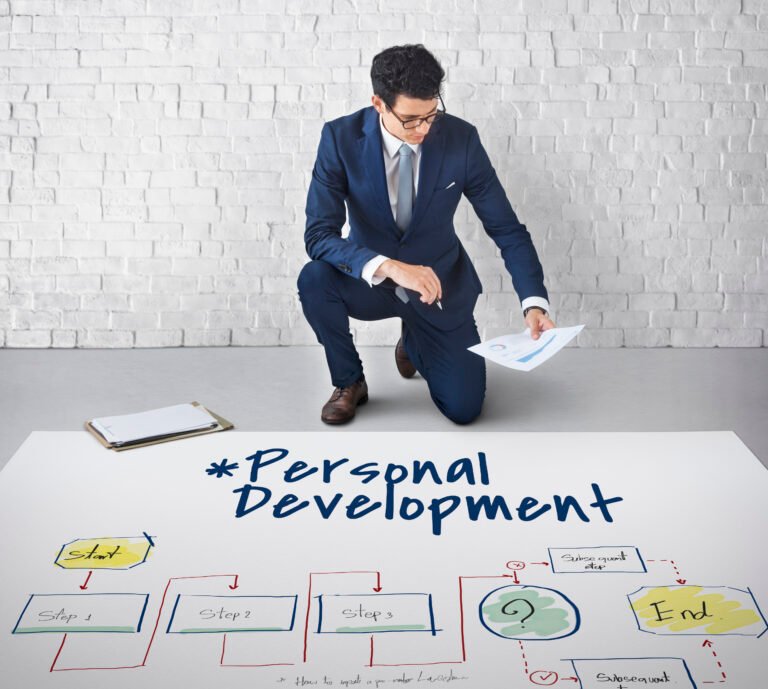What a Career Transition Analyzer actually does
A Career Transition Analyzer is a structured framework that helps you evaluate whether (and how) to move from your current role into a new career, industry, or level of responsibility. It’s more than a checklist — it’s a decision tool combining self-assessment, market research, skill gap analysis, timeline planning, and risk mitigation. Use this guide to walk through the 10 critical questions every Career Transition Analyzer must ask, and then turn answers into a realistic, measurable plan.

1) Why use a Career Transition Analyzer?
A career change is fundamentally a project: it requires data, experimentation, protective measures, and iteration. The Career Transition Analyzer forces you to treat emotion and impulse as inputs — not the only inputs. It surfaces risk, clarifies gaps, and creates a measurable path so you don’t “drift” into the next job hoping things will work out.
Table of Contents
Use the Career Transition Analyzer when:
- You’re dissatisfied but unsure what to do next.
- You have an opportunity (offer, relocation) and want to evaluate tradeoffs.
- You want to move industries, function, or into entrepreneurship.
2) Question 1 — What’s my primary motivation?
Why it matters: Motivation clarifies whether this transition is avoidance (leave current stress) or aspiration (move toward a goal). The strategy differs.
How to analyze:
- List your top 3 reasons (examples: higher pay, creative work, more autonomy, better work/life balance).
- Rate each reason 1–5 for urgency and long-term value.
Actionable tip: If the top reasons are all “escape” (burnout, micromanagement), prioritize fixing the current environment before full transition — often the solution is role adjustment or sabbatical.
3) Question 2 — What are my transferable skills?
Why it matters: Transferable skills shorten the path to the new role and reduce training cost.
How to conduct the inventory:
- Create two columns: Hard / technical skills and Soft skills.
- For each skill, mark whether you can demonstrate it with a metric or portfolio piece.
Example transferable skills:
- Project management → demonstrated via delivery dates, budgets.
- Communication → demos: slide decks, client emails, published articles.
- Data analysis → dashboard screenshots, KPIs improved.
Actionable tip: Identify 5 core transferable skills and prepare a one-sentence proof for each (e.g., “led a 3-person project to deliver X, improving Y by Z%”).
4) Question 3 — What are the skill gaps (technical & soft)?
Why it matters: Your Career Transition Analyzer must quantify what to learn and how long it takes.
Gap analysis process:
- For your target role, list required skills from job descriptions (top 6–8).
- Rate your competence 0–5 for each skill.
- For each skill with rating ≤3, estimate learning time (hours) and resource type (course, mentor, project).
Technical detail (example):
- Target skill: SQL — current level 2/5 — estimated 40 hours of practice + 3 small projects to reach 4/5.
- Soft skill: Stakeholder management — current level 3/5 — estimated 6 months of intentional mentorship & stretch projects.
Actionable tip: Prioritize high-impact gaps (skills that are required vs. “nice to have”).
5) Question 4 — What does the target market actually want?
Why it matters: Many candidates assume the market wants the same things they value. The Career Transition Analyzer forces market validation.
Market validation steps:
- Scrape 20–30 job descriptions (or read them) and identify recurring keywords and required metrics.
- Talk to 3–5 people currently in the role (informational interviews).
- Document the frequency of key requirements (e.g., “X% of jobs required A, B, C”).
Technical detail: Create a simple frequency table: job_title, requirement, count, percent. Use that to weight your learning plan toward the most common requirements.
Actionable tip: If certifications are often listed, factor their cost/time into your Analyzer.
6) Question 5 — What are my financial buffers and constraints?
Why it matters: Money dictates how long you can run experiments (side projects, courses) and whether you can accept lower pay during a transition.
Financial checklist:
- Current monthly essential expenses.
- Emergency fund months (number of months of runway).
- Reductions possible (temporary cuts to lifestyle).
- Expected income drop (if any) during the transition.
Technical calculation (sample):
- Monthly expenses: $3,000. Emergency fund: $9,000 → runway 3 months.
- If planned training is 3 months full-time, your runway is insufficient unless you reduce expenses or add part-time income.
Actionable tip: Aim for at least 6 months runway for risky transitions; 3 months with an active income buffer if risk is low.
7) Question 6 — How strong is my professional network?
Why it matters: Networking shortens the path to interviews and referrals.
Network diagnosis:
- Number of connections within target industry (estimate): 0–10 (weak), 11–50 (moderate), 51+ (strong).
- Number of past managers or peers who can provide referrals.
- Number of active mentors or coaches.
Actionable tip: If your network is weak, your Career Transition Analyzer should allocate the first 30–60 days to structured networking: 10 informational interviews, two referral asks per week, and 3 targeted LinkedIn posts.
8) Question 7 — What timeline is realistic?
Why it matters: A timeline turns analysis into a plan.
How to set timeline:
- Use skill gap estimates, market validation, and financial runway to set a realistic target — conservative, likely, optimistic.
- Example: Skill gap requires 3 months of evening study + 2 mini-projects → job search begins at month 4.
Gantt detail: Build a simple gantt: Month 1 = skill learning; Month 2 = project work; Month 3 = certifications; Month 4 = outreach & interviews.
Actionable tip: Add buffer weeks for setbacks (20% time buffer is reasonable)
9) Question 8 — What training or credentials are required?
Why it matters: Certifications, degrees, and portfolios change recruiter response rates.
Decision rules:
- Ask whether a credential is required, preferred, or irrelevant based on your job sample.
- If required, prioritize certification timelines in the Career Transition Analyzer.
Cost/time table example:
- Certification A — cost $400, time 6 weeks — pass rate info if available.
- Short course B — cost $50-150, time 2 weeks — useful for portfolio.
Actionable tip: Choose 1 high-value credential or 2 project-based proofs rather than many low-impact certificates.
10) Question 9 — What backup plans and exit conditions exist?
Why it matters: Every plan needs escape hatches. The Career Transition Analyzer must include them.
Types of backup plans:
- Option A (soft landing): internal transfer within your company.
- Option B (side income): freelancing or consulting for 3 months to extend runway.
- Exit conditions: if no interviews in X months, revise plan and expand to adjacent roles.
Actionable tip: Define 2 exit triggers (time-based and metric-based). Example: If no offers after 6 months and skill gap closure rate < 50%, pause and reassess.
11) Question 10 — How will I measure success?
Why it matters: Define measurable outcomes so you can objectively judge progress.
Sample success metrics:
- Number of interviews per month.
- Number of referrals.
- Skill proficiency: project completion with specified KPIs.
- Financial metric: runway months preserved.
- Readiness score improvement (see next section).
Actionable tip: Choose 3 primary KPIs and track weekly
12) Scoring method — compute your Readiness Score (technical details)
A Career Transition Analyzer must turn qualitative answers into a numeric Readiness Score you can track.
Step 1 — Rate 10 dimensions (one per question) on a 0–10 scale:
- Motivation clarity
- Transferable skills strength
- Skill gap severity (inverse score)
- Market fit (validation confidence)
- Financial runway
- Network strength
- Timeline realism
- Credential readiness
- Backup plan robustness
- Measurement plan clarity
Step 2 — Weight each dimension (weights should sum to 1). Example weights:
- Motivation: 0.07
- Transferable skills: 0.15
- Skill gap: 0.15
- Market fit: 0.12
- Financial runway: 0.12
- Network: 0.10
- Timeline: 0.07
- Credentials: 0.07
- Backup plan: 0.05
- Measurement plan: 0.10
Step 3 — Compute Score
For each dimension, multiply your rating (0–10) by its weight, then sum. Multiply final sum by 10 to convert to 0–100.
Example calculation:
- Transferable skills = 7 → weighted = 7 * 0.15 = 1.05
- Skill gap (inverse) = 6 → weighted = 6 * 0.15 = 0.9
… sum all weighted numbers = 7.4 → readiness = 74/100
Interpretation:
- 80–100: High readiness — begin targeted job search.
- 60–79: Moderate — close high-impact gaps then search.
- <60: Prepare longer; focus on network and skill acquisition.
Actionable tip: Recompute the score monthly to see progress.
13) Turning the Analyzer output into a 90-day plan
Once you have a Readiness Score and prioritized gaps, convert them into sprint-style tasks.
90-Day Planner (example):
Months 1 (Days 1–30) — Foundations
- Complete skill gap micro-courses (target 30–60 hours).
- Create 2 portfolio mini-projects demonstrating target skills.
- 5 informational interviews.
Month 2 (Days 31–60) — Proof and Visibility
- Finalize portfolio pieces; publish 1 case study article or post.
- Apply to 10 jobs targeted (quality over quantity).
- Request 5 endorsements from relevant peers (tactical outreach).
Month 3 (Days 61–90) — Outreach & Interviews
- Scale outreach, refine resume and tailored cover letters.
- Begin mock interviews with coach or mentor.
- Track interview response rate and iterate based on feedback.
Daily/Weekly rituals:
- 30–60 min skill practice daily.
- Two outreach/contact tasks per day (message, follow-up, post comment).
- Weekly review of Analytics (Readiness Score + KPIs).
14) Templates & scripts
Self-assessment quick sheet (copyable)
- Target role: ______
- Top 5 transferable skills: ______
- Top 5 target skills to learn: ______
- Runway (months): ____
- Network — high-value contacts: ____
- Readiness Score: __ /100
- Primary KPI this month: ____
Outreach script — informational interview
Subject: Quick chat about [role/industry]?
Hi [Name], I admire your work at [company]. I’m exploring a transition into [role] and would value 15 minutes of your time to ask a couple quick questions about your experience. Happy to work around your schedule. Thank you, [Your name]
Coaching brief (for paid coach)
- Current role & company: ______
- Target role & timeframe: ______
- Top 3 blockers: ______
- Skill evidence available: ______
- Desired outcomes this quarter: ______
15) Related-items table (products to consider)
| Product type | How it helps | Recommended use |
| Career guidebooks | Strategy frameworks & example pathways | Read to model transition narratives |
| Personality test books (MBTI/StrengthsFinder) | Clarify fit, strengths, and team roles | Use for self-awareness and interview framing |
| Guided journals / coaching journals | Reflective prompts, habit tracking | Daily reflection and learning logs |
| Planners & productivity tools | Timeboxing learning and outreach | Use for 90-day plan and sprints |
| Online course gift cards (Udemy/Coursera) | Access to targeted micro-courses | Close specific skill gaps quickly |
| Career coaching sessions (gift cards) | External accountability & interview practice | Use for mock interviews and CV review |
| Standing desk accessories | Improve focus and energy during long learning hours | Ergonomics for sustainable study sessions |
| Resume/CV review services | Professional formatting & keyword optimization | Final polish before applying |
Note: Product links are optional — the list above keeps the article complete if you add affiliate links later.
16) FAQs — Career Transition Analyzer
Q1 — How long should a realistic career transition take?
A: It depends on gap size. Small lateral moves: 1–3 months. Significant industry changes: 6–18 months. Use your Career Transition Analyzer to calculate time from skill gap hours, credential timelines, and networking ramp.
Q2 — Should I quit before I find a new job?
A: Rarely recommendable unless personal risk tolerance and finances allow. The Analyzer evaluates runway and suggests minimum buffer months.
Q3 — How do I talk about a career change in interviews?
A: Frame it as a deliberate move: show transferable skills, proof projects, and why your background adds unique value. Prepare a two-minute narrative using the Analyzer insights.
Q4 — Are personality tests useful?
A: They provide language and framing for your strengths; they should not be the sole basis for decisions. Use them as one input in the Analyzer.
Q5 — What if I get stuck after 3 months with no offers?
A: Use your backup plan. Recompute the Readiness Score, expand role targets, or consider a temporary bridge job to extend runway.
Q6 — How much networking is enough?
A: Quality beats volume. For most transitions, 20–30 targeted informational conversations provide enough market intelligence and referrals.
Q7 — Should I hire a career coach?
A: Coaches accelerate progress by providing feedback and accountability. Use a coach if your Readiness Score is moderate and you want to compress timelines.
17) Conclusion — use your Career Transition Analyzer like a compass, not a map
A Career Transition Analyzer converts uncertainty into measurable steps. It helps you trade impulsive decisions for controlled experiments: small projects, learning sprints, and targeted networking. Use the 10 questions as a recurring monthly ritual — recompute your Readiness Score, adjust your sprint plan, and keep experimenting until you land the right role.






